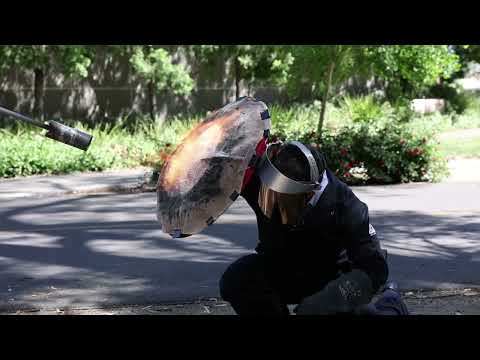
With every passing day, the James Webb Space Telescope (JWST) peers further into the depths of space—and further back in time. Its latest discovery is a galaxy designated JADES-GS-z14-10. Dating to only 300 million years after the Big Bang, it is the most ancient galaxy yet observed. Its discovery—along with that of another, nearly as distant galaxy dubbed JADES-GS-z14-11—was announced this week in a paper by a multidisciplinary team led by Stefano Carniani of the Scuola Normale Superiore in Pisa, Italy.
Astronomers calculate the distance of objects like JADES-GS-z14-10 by examining their so-called redshift value. Because the universe is expanding, the wavelength of light waves is stretched as they move through space. This phenomenon is known as redshift because it moves light toward the infrared region of the electromagnetic spectrum.
[ Related: The 8 most extraordinary JWST images of 2024, so far ]
The further away a given source of light is, the longer it has to travel to get to us, and the more it is redshifted along the way. The JWST’s instrumentation is designed to examine the dramatically redshifted light from distant galaxies, and its sensitivity to this light has allowed it to set record after record for the most distant object ever observed. (JADES-GS-z14-10’s redshift value of 14.32 makes it the new holder of this record.)
However, even for the JWST objects as far away as JADES-GS-z14-10 present a challenge. The extreme faintness of their light often makes it difficult to derive enough information about them to draw any definitive conclusions about their properties. JADES-GS-z14-10 first caught astronomers’ attention because it appeared to defy this trend—despite its extreme redshift, the galaxy was unusually bright.
This brightness was initially assumed to be due to its proximity in the sky to another, closer galaxy. However, it soon became clear that JADES-GS-z14-10 was something special, and that its remarkable luminosity was all its own. This made it a prime candidate for closer examination, and in October last year, the JWST’s near-infrared camera was trained at it for five full days. The data provided by this close observation allowed scientists to conduct a detailed examination of the galaxy’s spectral signature, which in turn allowed for close investigation of the galaxy’s composition and evolution, the results of which are published in a separate paper.
This paper suggests that JADES-GS-z14-10 contained “half a billion solar masses in stars, with a strong burst of star formation in the most recent few million years.” This is far earlier than pre-JWST models deemed possible, and as Carniani says, “It is stunning that the Universe can make such a galaxy in only 300 million years.”
The JWST has provided a steady stream of such stunning revelations, and in doing so, revolutionized our understanding of how and when the first galaxies coalesced from the primordial gas released in the Big Bang. As a third paper published this week, this one dedicated to a wider observation of the JADES Origins Field—the region of the sky that contains JADES-GS-z14-10—notes, “we have extended our reach into the cosmic past by 40% during the first eighteen months of JWST operations.”
The existence of luminous galaxies like JADES-GS-z14-10 in the early universe has proven a further surprise to scientists. This galaxy and similar objects are promising subjects for further observation, as their remarkable brightness dangles the tantalizing prospect of allowing us to peer right back to what the Carniani et al paper calls “the Cosmic Dawn … the period where the first galaxies were born.”





